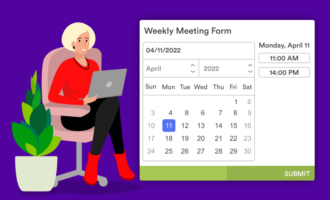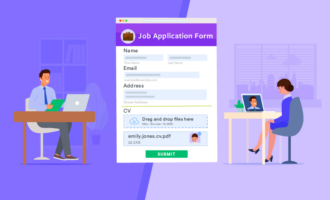Engaged employees are typically stellar employees. They’re the best performers in the company; they evangelize your business to customers, family, and friends; and they set a positive example for their coworkers. They’re exactly the kind of people you want on your team.
On the other hand, disengaged employees can wreak havoc on your organization. Last year, an article in Forbes examined how much disengaged employees were costing companies. The results, from a Gallup poll, were sobering: Disengaged employees have 37 percent higher absenteeism, 18 percent lower productivity, and 15 percent lower profitability.
It stands to reason that one of the best things you can do for the health of your company is improve employee engagement, which first requires measuring current levels of employee engagement. How do you do that? Start with an employee engagement survey.
Employee engagement surveys allow employees to share feedback anonymously, so you’re able to get honest opinions and an accurate measure of engagement. You can then implement necessary changes based on the responses to create a healthy work environment of satisfied, engaged, and productive employees — the kind of environment that also happens to be very good for your bottom line.
Engagement surveys can range widely from as few as 10 and as many as 50 questions, organized into several categories or themes. Themes include overall job satisfaction; job-specific questions; and questions about supervisors, values, leadership, communication, team dynamics, and training and benefits. You can use a mixture of multiple-choice and open-ended questions.
Here are a handful of questions to consider asking on your employee engagement survey. Keep in mind that your survey can include many more questions than the ones mentioned here. This list is simply meant to get you started.
Example employee satisfaction questions
Rate your happiness at work on a scale of 1 to 10
How would you rate your work-life balance on a scale of 1 to 10?
If a friend was looking for work, would you refer them here?
If you were considering quitting in the next week, what would your reason be?
This straightforward question can track employee satisfaction over time.
Happy employees are well-balanced employees. They need to feel they have adequate time outside work to devote to their personal lives.
If an employee is happy at their job, they’ll have good things to say about the company to family and friends.
The response to this question can help you uncover lots of useful information, like how valued your employees feel, what areas of concern you should focus on, and key improvements to implement.
Example management and leadership questions
How valued do you feel at work?
How often does your manager recognize your contributions?
Valued employees are motivated employees. On the other hand, if they don’t feel their work matters, they may become apathetic and look for opportunities elsewhere.
Morale and engagement suffer when employees don’t receive regular recognition. The result is a negative impact on productivity and performance.
Example employee retention questions
Would you reapply to your current job?
Do you think you can reach your full potential here?
Where do you see yourself in one year?
You see a job you’d be ideal for on a job board. What do you do?
You want the answer to this question to be “yes.” A “no” or “not sure” answer could mean the employee isn’t happy and could be planning to move on soon.
If employees don’t believe there are growth and development opportunities at your company, it’s a good bet they won’t stick around for the long haul.
If employees don’t see themselves working at your company in the short timeframe of one year, there are likely problems to be addressed.
The answer to this question can tell you how committed employees are to your organization.
Example personal growth questions
Which new responsibilities or roles would you like to pursue at this company?
Do you receive appropriate growth and development opportunities in your current position?
The response to this question will reveal how happy — or unhappy — employees are with their career advancement and growth opportunities, which is a good indicator of overall satisfaction.
If employees don’t have the opportunity to achieve their career goals, they probably aren’t happy and fulfilled in their role at your company.
You may also want to include questions in other key categories such as company culture, communication, workplace wellness, compensation and benefits, and others.
An effective survey typically includes two or more open-ended questions to gather qualitative data. Here are some examples:
- What do you love about working here?
- What are the company’s greatest strengths?
- What areas of the company need the most improvement?
- What elements of your job make you dread Mondays?
- Is there anything else you’d like to share that we didn’t address?
If you’re thinking of implementing an employee engagement survey, these questions are a good place to start. And, of course, you can create your employee engagement survey with Jotform’s Survey Maker, or use one of our templates.
If your company has never rolled out a company-wide survey, the very act of launching one is a first step to showing employees that their feedback is respected and valued, which can go a long way toward creating goodwill.
Once the survey is complete and the results are in, you’ll have valuable information about improvements you can make to foster a healthier, happier, more fulfilled workforce.













































































































Send Comment: